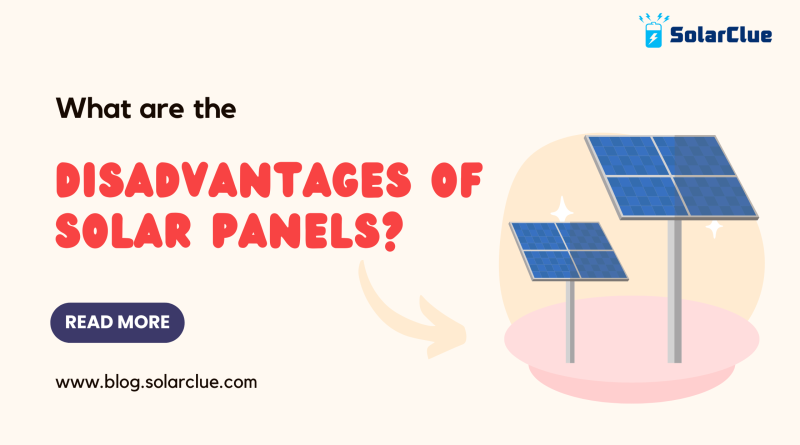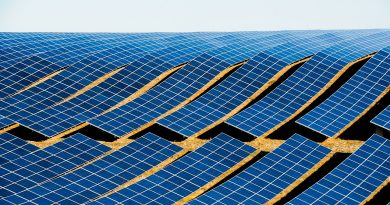What Are The Disadvantages Of Solar Panels?
Solar energy is celebrated for its role in reducing carbon emissions and providing a renewable energy source. However, like any technology, it has its challenges and limitations. This blog post explores the disadvantages of solar panels, from high upfront costs to environmental concerns, and offers solutions or mitigation strategies for each issue.
Table of Contents
- 1 High Initial Investment Costs and Payback Periods
- 1.1 Disadvantages
- 1.2 Reliance on Sunlight for Energy Generation
- 1.3 The Need for Energy Storage Solutions
- 1.4 Environmental Impact of Solar Panel Manufacturing and Disposal
- 1.5 Geographic Limitations for Solar Panel Effectiveness
- 1.6 Policy and Regulatory Challenges for Solar Energy Adoption
- 1.7 Addressing Public Misconceptions About Solar Panels
- 1.8 The Future of Solar Technology and Its Potential to Overcome Limitations
- 1.9 Conclusion
- 1.10 FAQs
High Initial Investment Costs and Payback Periods
Disadvantages
- High Upfront Costs: Solar panel installations require a significant initial investment, which can be a barrier for many homeowners and businesses.
- Long Payback Periods: Depending on the location, energy consumption, and available incentives, the payback period for solar installations can be several years.
Solutions
- Government Incentives: Many governments offer subsidies, tax credits, and rebates to reduce the initial cost of solar installations.
- Financing Options: Solar loans, leases, and power purchase agreements (PPAs) can spread the cost over time, making solar energy more accessible.
- Decreasing Costs: Advances in technology and increased market competition are driving down the cost of solar panels.
Reliance on Sunlight for Energy Generation
Disadvantages
- Daytime and Weather Dependency: Solar panels only generate electricity when the sun is shining. Cloudy days and nighttime significantly reduce energy production.
- Seasonal Variability: Solar energy production can vary with the seasons, being lower in winter months when sunlight is less intense.
Solutions
- Energy Storage: Batteries can store excess energy generated during sunny periods for use during cloudy days or nighttime.
- Hybrid Systems: Combining solar with other renewable sources like wind or with grid electricity ensures a continuous power supply.
- Optimized Panel Placement: Proper placement and orientation of solar panels can maximize sunlight exposure and improve efficiency.
The Need for Energy Storage Solutions
Disadvantages
- Cost of Batteries: Energy storage systems, like lithium-ion batteries, add to the overall cost of a solar power system.
- Limited Lifespan: Batteries have a finite lifespan and require replacement every 5-15 years, adding to maintenance costs.
- Efficiency Loss: Storing and retrieving energy from batteries incurs some efficiency loss.
Solutions
- Incentives for Storage: Some regions offer incentives specifically for energy storage systems, reducing the financial burden.
- Advancements in Technology: Ongoing research is leading to more efficient and longer-lasting battery technologies.
- Integrated Systems: Using smart energy management systems can optimize the use and lifespan of batteries.
Environmental Impact of Solar Panel Manufacturing and Disposal
Disadvantages
- Resource-Intensive Production: Manufacturing solar panels involves the use of raw materials and energy, leading to carbon emissions.
- Toxic Chemicals: Some manufacturing processes involve hazardous chemicals, posing environmental risks.
- End-of-Life Disposal: Solar panels have a lifespan of 25-30 years, after which they need to be disposed of or recycled, potentially creating waste issues.
Solutions
- Recycling Programs: Developing effective recycling programs can mitigate the disposal problem and recover valuable materials.
- Green Manufacturing Practices: Innovations in manufacturing are reducing the environmental footprint of solar panel production.
- Regulations and Standards: Implementing stringent environmental standards can ensure safer production and disposal practices.
Geographic Limitations for Solar Panel Effectiveness
Disadvantages
- Variable Sunlight: Solar panel effectiveness varies significantly based on geographic location. Areas with less sunlight receive lower energy yields.
- Space Requirements: Adequate roof or land space is necessary for installing solar panels, which may not be available in densely populated urban areas.
Solutions
- Solar Mapping: Using solar maps and assessment tools can help identify the best locations for solar installations.
- Community Solar Projects: These projects allow multiple users to benefit from a shared solar array, making solar energy accessible even in urban areas.
- Adjustable Mounting Systems: Systems that allow for seasonal adjustment of panel angles can enhance energy capture in areas with less optimal sunlight.
Policy and Regulatory Challenges for Solar Energy Adoption
Disadvantages
- Inconsistent Policies: Policies and incentives for solar energy can vary widely by region, creating uncertainty for potential adopters.
- Regulatory Hurdles: Bureaucratic procedures and stringent regulations can delay the installation process and increase costs.
Solutions
- Advocacy and Education: Raising awareness and advocating for consistent and supportive policies can drive solar energy adoption.
- Streamlined Processes: Simplifying regulatory procedures and providing clear guidelines can facilitate easier solar installations.
- Collaboration with Utilities: Working with utilities to create favorable net metering policies and grid integration can enhance the benefits of solar energy.
Addressing Public Misconceptions About Solar Panels
Disadvantages
- Misinformation: Misconceptions about the effectiveness, cost, and reliability of solar panels can deter potential users.
- Perceived Complexity: Some people believe that installing and maintaining solar panels is overly complex and not worth the effort.
Solutions
- Public Education Campaigns: Providing accurate information about the benefits and feasibility of solar energy can counteract misconceptions.
- Transparent Communication: Clear and straightforward communication from solar providers can demystify the process and encourage adoption.
- Showcasing Success Stories: Highlighting successful solar installations and their benefits can inspire others to follow suit.
The Future of Solar Technology and Its Potential to Overcome Limitations
Advancements in Solar Technology
- Efficiency Improvements: Research is leading to the development of more efficient solar panels that can generate more power from the same amount of sunlight.
- New Materials: Innovations in materials, such as perovskite solar cells, promise to reduce costs and improve performance.
- Integrated Systems: Combining solar panels with advanced energy storage and smart grid technologies can enhance overall system efficiency and reliability.
Policy and Market Trends
- Supportive Policies: Governments worldwide are increasingly recognizing the importance of renewable energy and are likely to continue supporting solar energy through favorable policies.
- Market Growth: As the market for solar energy grows, economies of scale will further drive down costs and make solar energy more accessible.
Conclusion
While solar panels offer numerous benefits, including reducing carbon emissions and lowering energy costs, they also come with certain challenges and limitations. By understanding these disadvantages and implementing appropriate solutions, homeowners, businesses, and policymakers can maximize the potential of solar energy. Continued advancements in technology, supportive policies, and public awareness will play crucial roles in overcoming these challenges and driving the widespread adoption of solar power.
Here at SolarClue®, we offer a smart, practical, and “beautiful” solution. You will be answered for all the questions related to Solar.
We provide all kinds of brands that are the Best Solar panels in India.
If you are the one who is planning for the solar power system. Don’t hesitate to contact our team!
Looking forward to empowering you with solar energy, just like hundreds of our other clients!
FAQs
What are the main disadvantages of solar panels?
High initial costs, dependence on sunlight, energy storage requirements, environmental impact of manufacturing and disposal, and geographic limitations.
How can the high initial costs of solar panels be mitigated?
Government incentives, financing options, and decreasing costs of solar technology can help reduce the financial burden.
What solutions exist for the reliance on sunlight for energy generation?
Energy storage systems, hybrid systems, and optimized panel placement can help ensure a reliable power supply.
How can the environmental impact of solar panel manufacturing and disposal be addressed?
Recycling programs, green manufacturing practices, and stringent environmental standards can mitigate environmental concerns.
What advancements are expected to improve the future of solar technology?
Efficiency improvements, new materials, and integrated systems combining solar with advanced storage and smart grid technologies.



